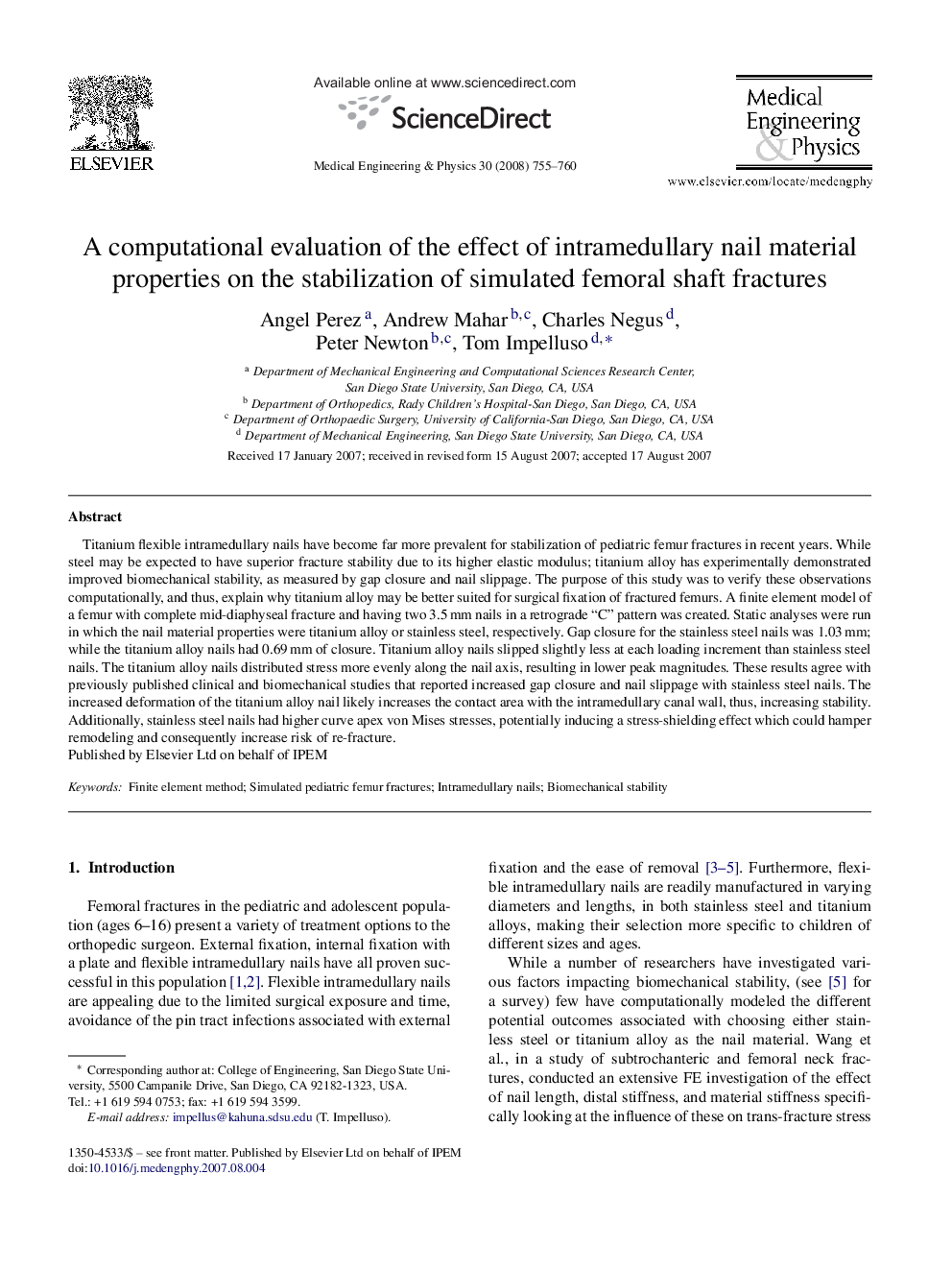| کد مقاله | کد نشریه | سال انتشار | مقاله انگلیسی | نسخه تمام متن |
|---|---|---|---|---|
| 877190 | 910895 | 2008 | 6 صفحه PDF | دانلود رایگان |

Titanium flexible intramedullary nails have become far more prevalent for stabilization of pediatric femur fractures in recent years. While steel may be expected to have superior fracture stability due to its higher elastic modulus; titanium alloy has experimentally demonstrated improved biomechanical stability, as measured by gap closure and nail slippage. The purpose of this study was to verify these observations computationally, and thus, explain why titanium alloy may be better suited for surgical fixation of fractured femurs. A finite element model of a femur with complete mid-diaphyseal fracture and having two 3.5 mm nails in a retrograde “C” pattern was created. Static analyses were run in which the nail material properties were titanium alloy or stainless steel, respectively. Gap closure for the stainless steel nails was 1.03 mm; while the titanium alloy nails had 0.69 mm of closure. Titanium alloy nails slipped slightly less at each loading increment than stainless steel nails. The titanium alloy nails distributed stress more evenly along the nail axis, resulting in lower peak magnitudes. These results agree with previously published clinical and biomechanical studies that reported increased gap closure and nail slippage with stainless steel nails. The increased deformation of the titanium alloy nail likely increases the contact area with the intramedullary canal wall, thus, increasing stability. Additionally, stainless steel nails had higher curve apex von Mises stresses, potentially inducing a stress-shielding effect which could hamper remodeling and consequently increase risk of re-fracture.
Journal: Medical Engineering & Physics - Volume 30, Issue 6, July 2008, Pages 755–760